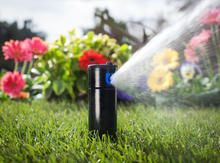Now that spring is here, it’s time to start thinking about getting your lawn and garden in order. From fertilizing your lawn to trimming your trees, there are several important steps to take when it comes to early spring landscape maintenance. One of the most important tasks is ensuring your lawn sprinkler system is in good condition. This means scheduling a visit from a qualified lawn sprinkler contractor to inspect, maintain, and, if needed, install a new sprinkler system. Taking care of your lawn sprinkler system now will ensure it runs smoothly throughout the summer.
Irrigation Systems are Crucial
An irrigation system will ensure a consistent water supply for your lawn and plants throughout the growing season. With regular watering, your lawn and garden will be healthier, greener, and more vibrant. In addition, installing an irrigation system can save you time and effort, as you won’t need to manually water your lawn or garden anymore. Instead, your irrigation system will do all the hard work for you. Furthermore, with an irrigation system, you can control the amount of water that is used for your lawn and plants. By controlling the amount of water you use, you’ll be helping conserve valuable resources and saving money on your utility bills.
Other Spring Lawn Tips

Overseeding: Unless it can’t be avoided, do not seed in the spring. The ideal seeding season is in the fall months of September and early October. During these months outdoor temps moderate, weed pressure is very low and the soil temperatures are ideal for grass germination. Spring seeding can also produce wonderful results, although there are some concerns that should be considered when choosing Spring seeding.
Concerns Associated With Spring Seeding:
- In the spring weed pressure is very high. Pre-emergent herbicides and post-emergent weed control must be suspended until the grass has fully germinated. This can result (and often does) in the germination of several weeds that will need to be left alone until the grass is fully germinated. Before weed control can resume we want the grass to germinate and grow tall enough so that it receives 2 mowings before treatment is made. Some of the weeds that germinate during this period (especially crabgrass) could take multiple applications eradicate them.
- Spring seeding is best done in late April and early May after the potential for frost has become less likely. The grass that is grown in May will have a fairly shallow root system when the summer heat arrives. For that reason consistent watering will be essential throughout the summer to ensure the new grass does not decline.
Pre-Emergents and Fertilization: Applying lawn pre-emergent in the spring is key to preventing crabgrass in the lawn. Timely pre and post emergent applications in the spring will successfully set the tone for the lawn in the months to come and can be the difference between success and disaster.
Mowing: Starting in late March or Early-April , begin mowing your lawn weekly, raising the blade to 3-4 inches. This will help the grass grow thicker and healthier. Make sure to only mow when necessary, as mowing too much can cause more damage than good.
Watering: Water your lawn deeply and infrequently. Watering too often can lead to shallow root systems and increased pest and disease activity. As a general rule, try to water your lawn deeply about once a week for the best results.
Green Lawn can install your new irrigation system, as well as help you with all your lawn maintenance and landscaping needs. Contact us today to learn more!